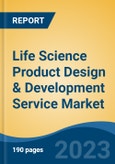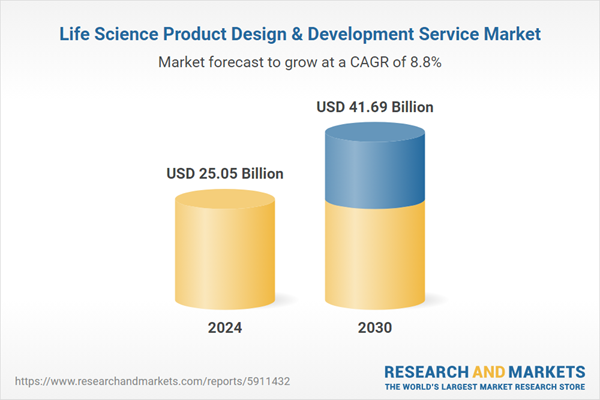Speak directly to the analyst to clarify any post sales queries you may have.
10% Free customizationThis report comes with 10% free customization, enabling you to add data that meets your specific business needs.
Key Market Drivers
Growing Demand for Innovative Healthcare Solutions
The pursuit of improved health outcomes has consistently driven innovation in the healthcare sector. Recently, there has been a significant surge in the demand for innovative healthcare solutions, leading to increased emphasis on research and development. This growing demand is not only transforming patient care but also accelerating the growth of the Global Life Science Product Design & Development Service Market.Key Market Challenges
Extended Development Timelines
The development of life science products - such as pharmaceuticals and medical devices - can be a lengthy process that involves multiple stages: pre-clinical studies, clinical trials, regulatory approvals, and post-market surveillance. Each stage is essential for ensuring product safety, efficacy, and compliance with regulatory standards. Clinical trials alone can span several years, requiring extensive data collection and patient monitoring. After trials, regulatory agencies, including the FDA and EMA, must review the data before granting approval, which can take several months or even years. Post-market surveillance is also required to track long-term outcomes and monitor for adverse effects, adding further delays. These extended timelines increase operational costs, require significant capital investment, and may lead to missed opportunities in addressing urgent healthcare needs, which affects the speed at which companies can bring innovative solutions to market.Key Market Players
- Ximedica, LLC
- DeviceLab Inc.
- Jabil Inc.
- Flex Ltd
- Plexus Corp
- Nordson Corp
- Celestica Inc.
- StarFish Medical
- Planet Innovation Pty Ltd
- Donatelle Plastics, LLC
Report Scope:
This report segments the Global Life Science Product Design & Development Service Market into the following categories, in addition to detailing the industry trends:
Market by Phase:
- Concept & Requirements Development
- Design Verification
- Detailed Design & Process Development
- Process Validation
- Manufacturing Transfer & Design Validation
- Production & Commercial Support
- Research, Strategy, & Concept Generation
Market by End Use:
- Biotechnology Companies
- Contract Research Organizations
- Medical Device Companies
- Pharmaceutical Companies
Market by Application:
- Biological Storage
- Clinical Laboratory Equipment
- Consumables
- Diagnostic Equipment
- Surgical Instruments
- Therapeutic Equipment
Market by Region:
- North America
- United States
- Canada
- Mexico
- Europe
- Germany
- United Kingdom
- France
- Italy
- Spain
- Asia-Pacific
- China
- Japan
- India
- Australia
- South Korea
- South America
- Brazil
- Argentina
- Colombia
- Middle East & Africa
- South Africa
- Saudi Arabia
- UAE
Competitive Landscape:
Company profiles provide a detailed analysis of the leading players in the Global Life Science Product Design & Development Service Market.Available Customizations:
TechSci Research offers tailored customizations for the Global Life Science Product Design & Development Service Market report based on specific company needs. Customization options include:
Company Information:
- Detailed analysis and profiling of up to five additional market players.
This product will be delivered within 1-3 business days.
Table of Contents
Companies Mentioned
- Ximedica, LLC
- DeviceLab Inc.
- Jabil Inc.
- Flex Ltd
- Plexus Corp
- Nordson Corp
- Celestica Inc.
- StarFish Medical
- Planet Innovation Pty Ltd
- Donatelle Plastics, LLC
Table Information
| Report Attribute | Details |
|---|---|
| No. of Pages | 185 |
| Published | February 2025 |
| Forecast Period | 2024 - 2030 |
| Estimated Market Value ( USD | $ 25.05 Billion |
| Forecasted Market Value ( USD | $ 41.69 Billion |
| Compound Annual Growth Rate | 8.8% |
| Regions Covered | Global |
| No. of Companies Mentioned | 10 |









